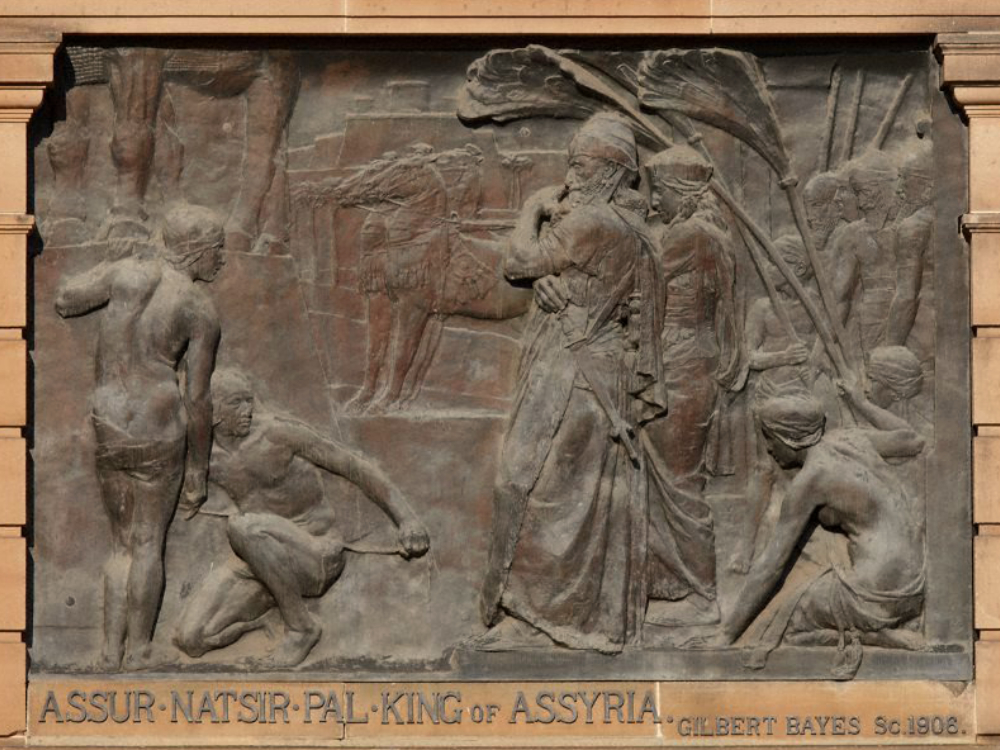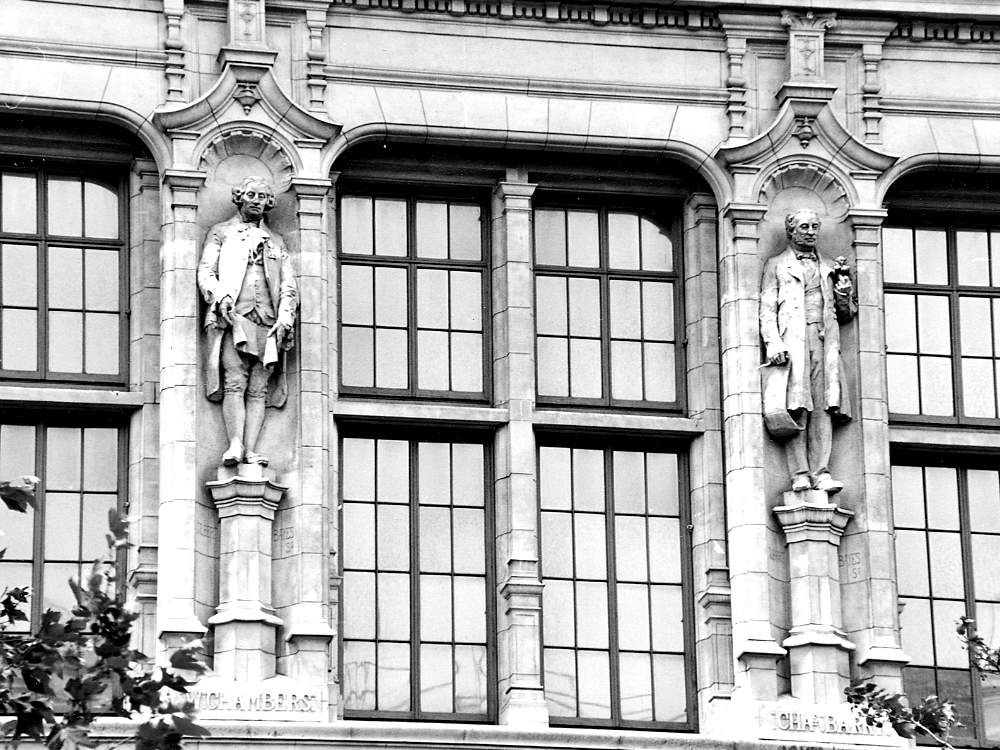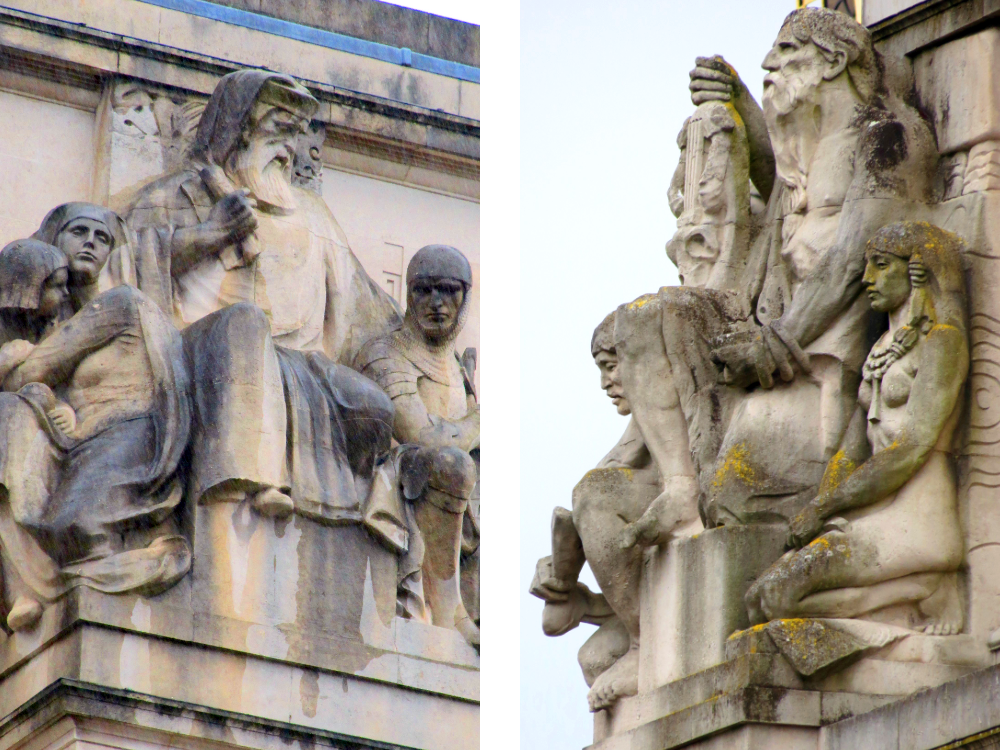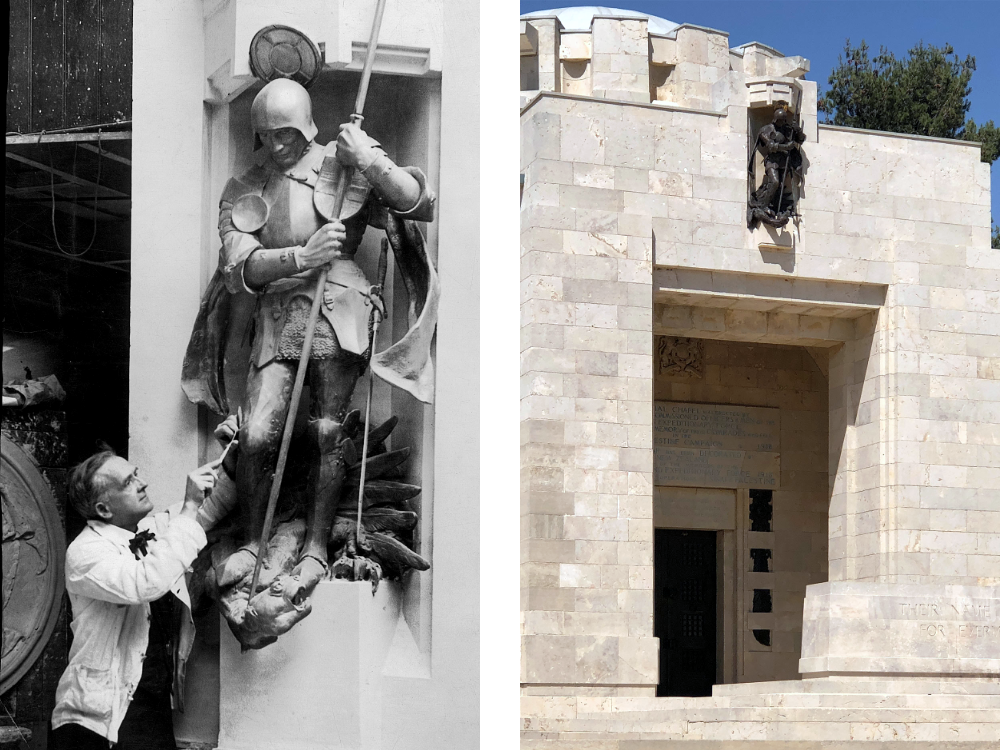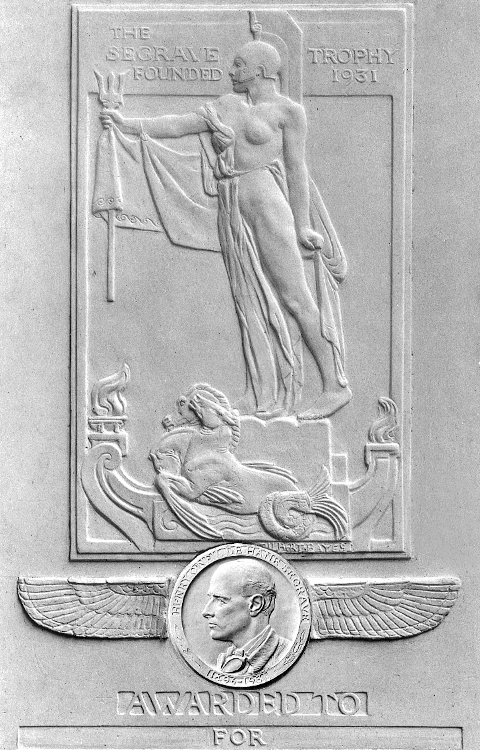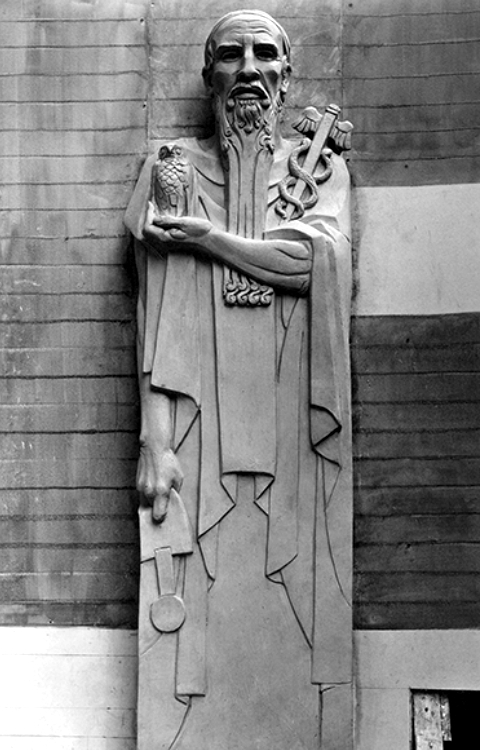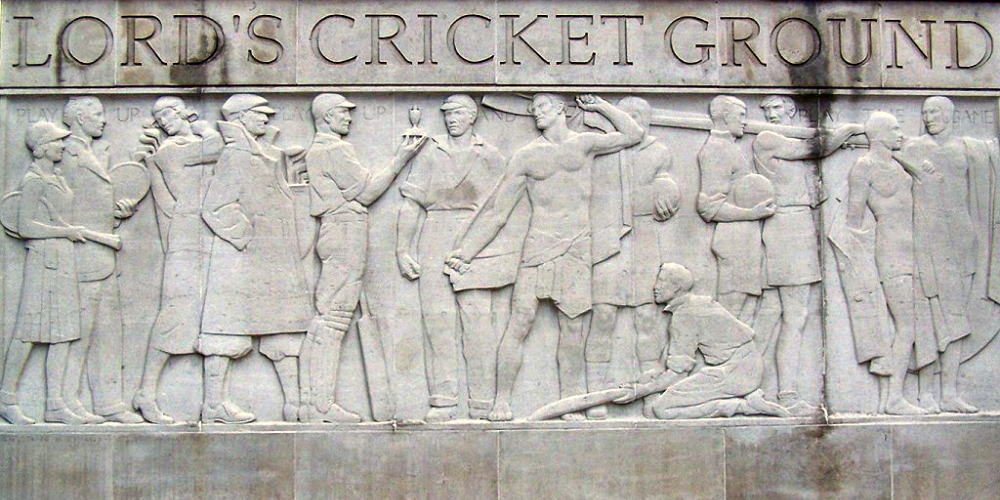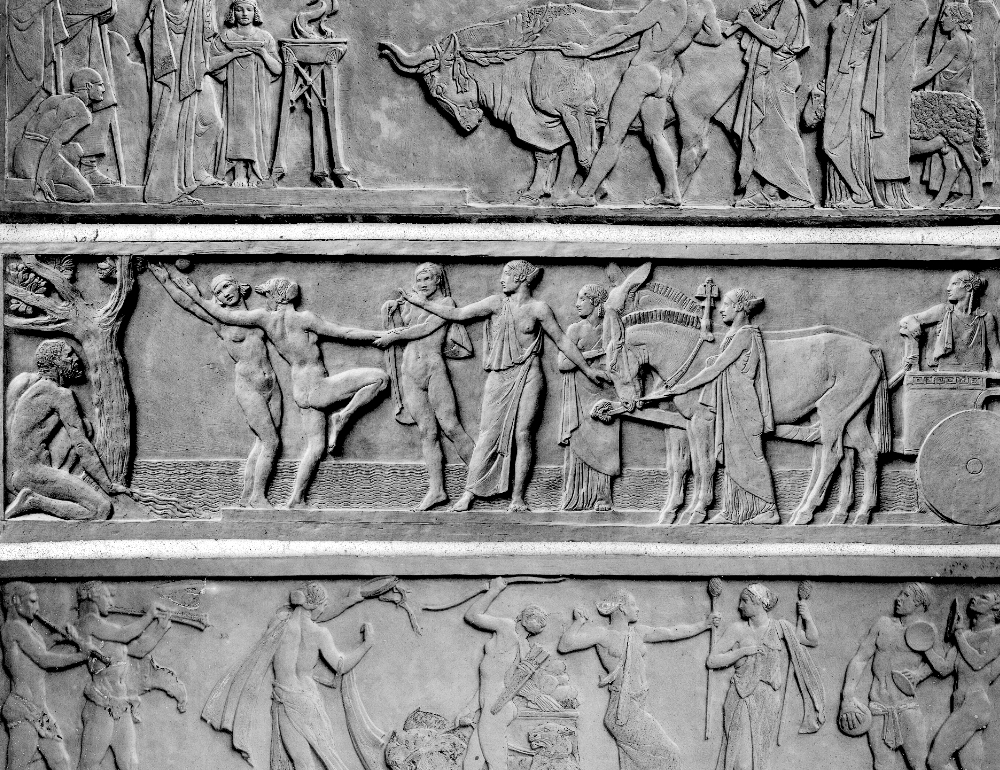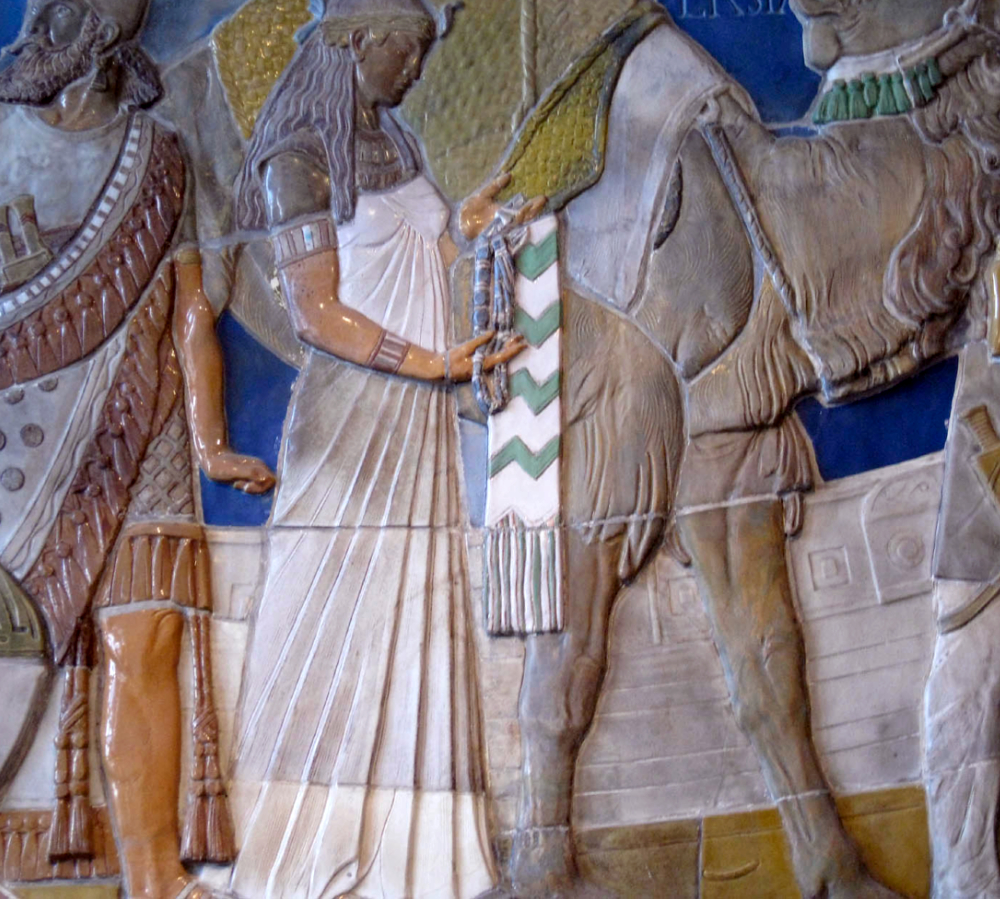Doulton and Company
By the early 1920's Bayes already had considerable experience with concrete. In collaboration with artist Thomas Penberthy Bennett, in 1924, Bayes produced low relief panels in cement that were then painted to resemble neo-classical stucco work, for which he used the theme, Music Art and Science.
It was Bayes's interest in the use of colour for sculpture, which initiated a singularly long, and successful association with the ceramic manufacturers, Doulton and Company, mentioned earlier, and its development of polychrome stoneware. Bayes was the first artist to take interest in this medium and it was owing to him that it was so successfully exploited in the inter-war years. Bayes used his experience from the St Pancras Housing commission in producing a fifty feet long frieze of Pottery through the Ages for the Company's new headquarters on the Lambeth Embankment. The Doulton House frieze was dismantled in 1979 when the building was demolished but it was restored and re-erected in the Victoria and Albert Museum in 1988.
Bayes's last architectural commission, in 1951, was for a university building, Withersdane Hall at Wye College. Although there was some disagreement with the clients about the sketch model, the classical style was to their taste and the Empire Stone Company cast the panel in 1952.

